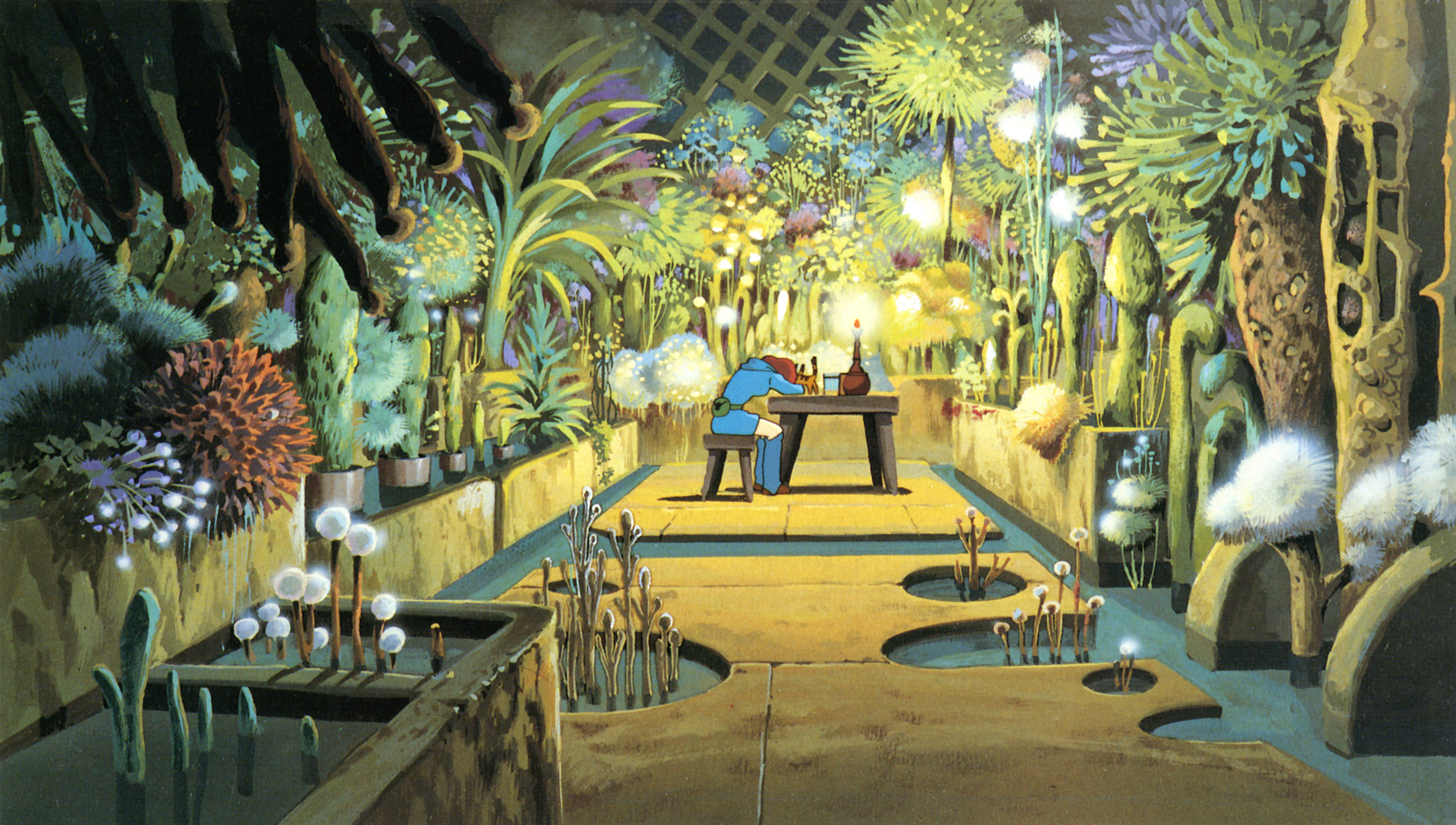
There are many problems confronting modern society but one of them is the effect humans are having on the earth. The significance of this issue has not diminished since the time of director Hayao Miyazaki’s animated release of Nausicaä of the Valley of the Wind in 1984. The beauty of a harmonious relationship with nature is told through the story of Nausicaä, the young princess of a valley who relies on wind power and believes in the care of their people as much as the care of the forest and natural world which they rely on. The architecture of the valley is reminiscent of a medieval village from the stone castle and to the robes and cloth headdresses the women wear. Their seemingly feudal-age culture is contrasted by the use of sleek, white gliders which seem to emerge from a science fiction novel.
The earth has just emerged from an apocalyptic war between the humans and the toxic forest, which resulted in the extermination of human existence by the large, prehistoric beasts called, Ohms, from the forest. Nausicaä uses her own glider to swiftly travel from the valley to the distant toxic forest, where the poisonous gases and monstrous bugs come from. The neighboring cities believe that the forest needs to be eliminated for the safety of humanity from not only the bugs, but the diseases the forest spreads to the people.
Nausicaä strongly believes that the forest has the power to heal and that humans and the forest are meant to co-exist. She shares this belief with the people she encounters through her natural charm with the animals and the way she gains their trust without asking anything in return. She also raises her own secret garden in the castle where she’s managed a way to grow the plants of the forest in a non-poisonous way, in an attempt to prove that the danger lies not in the forest itself, but in the remnants of the war and the toll humans took on the forest. Through it all, she has faith that their will be understanding and it is that strength of conviction combined with the beautiful characters Miyazaki has drawn together that pull you into Nausicaä’s world where holding unwaveringly onto ones beliefs and remaining brave in the face of adversity is one of the most beautiful characteristics one can hold, in the world of Miyazaki or the real world as well.


